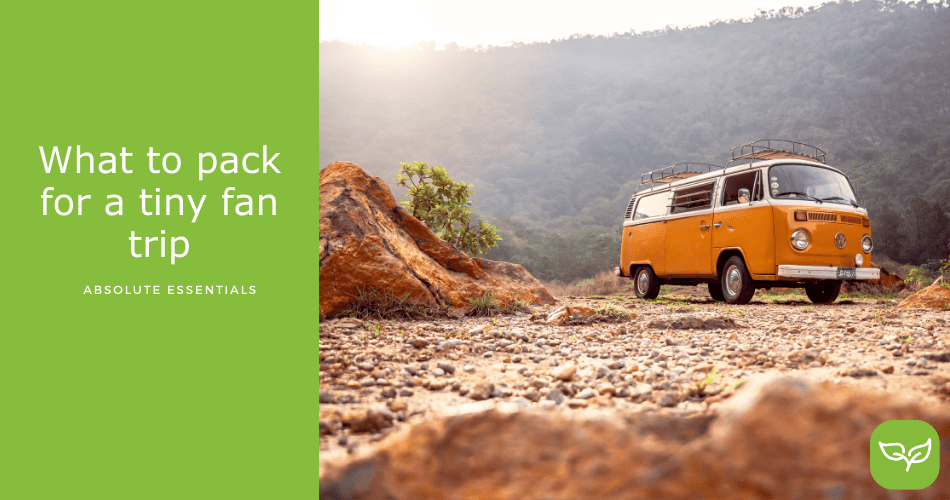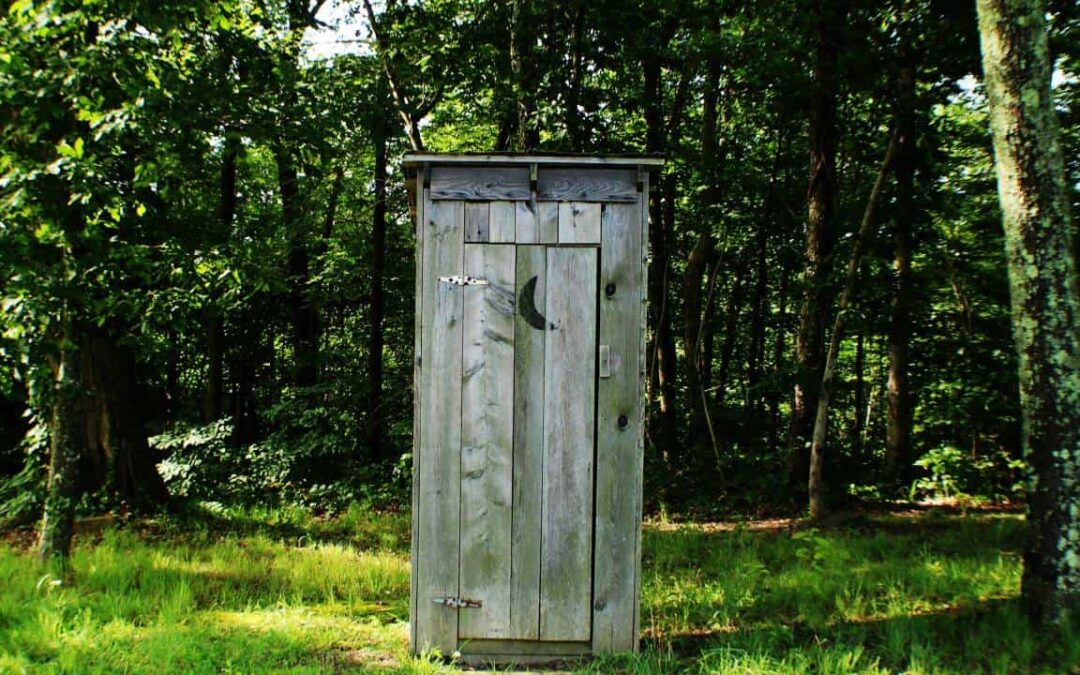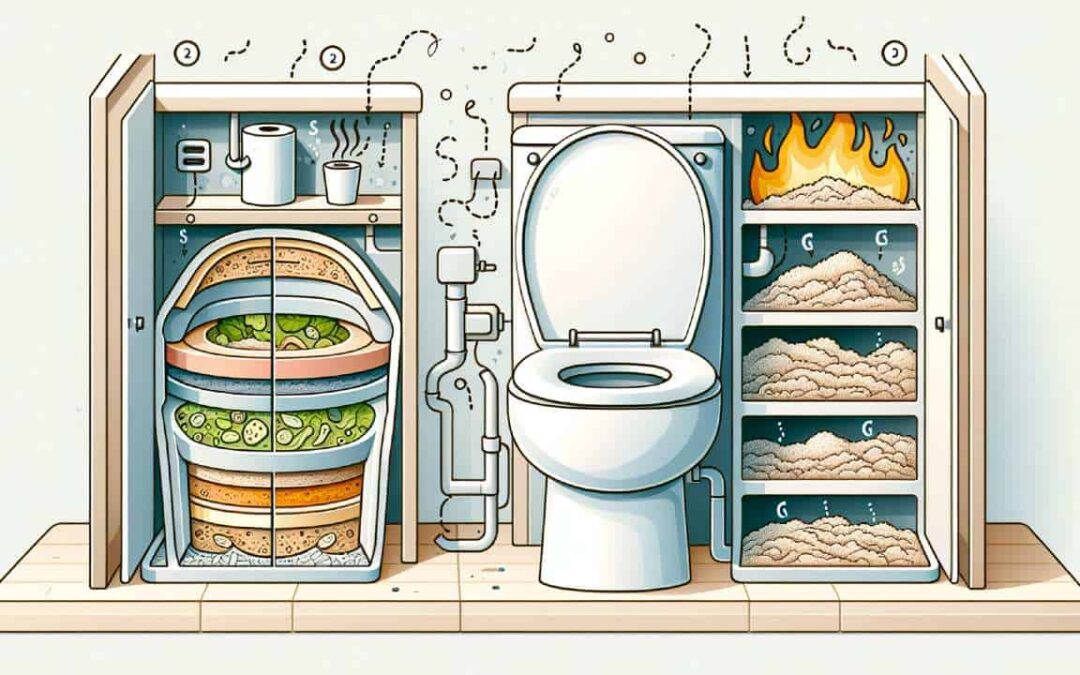One of the most potentially intimidating parts of planning your new van life adventure is figuring out what to pack. Let’s face it, a fully outfitted tiny van doesn’t offer a ton of storage space, so you have to be strategic in your packing list.
With that in mind, I’ve whipped up this little list of the items I think are essential (plus a few entertaining extras to consider) to get you started strong on your trip. Your list will undoubtedly be much longer than this one, but it’s an excellent place to begin when writing your packing list.
The Importance of Good Packing and Organization
Vanlife is a fantastic way to see the countryside, but even the largest sprinters aren’t exactly bursting with space. Before you start buying new gear for your van, it’s a good idea to make a rough plan of where things will go. One piece of advice, though.
Don’t overthink it.
I guarantee you’ll repack and reorganize your van several times in the first few weeks after you hit the road. Start with a basic idea of where you want the biggest and most important things to go, then build your storage space for other items around them.
Van Stuff
At the end of the day, your wonderful rolling home is still a vehicle. You need to keep the basics of automotive gear on hand for upkeep purposes and in case of misadventure.
Start by learning where your spare tire and tool kit is kept, then upgrade it as needed. I highly recommend you practice changing your tire at least once before leaving on your trip, as you don’t want your first time figuring it out to be in the middle of nowhere during a rainstorm.
- LED Flashers/Road Flares – If your van breaks down on the road you want it to be highly visible. Pick either road flares or rechargeable LED Flashing Lights for the job.
- Quality Tape – Duck Tape is an acceptable starting point, but I’m partial to Gorilla Tape. It’s honestly better in just about every way you can think of, including being tougher, stronger stick, and waterproof.
- Sturdy Rope – It doesn’t need to be climbing grade, but get a decent (20-30 feet) length of rope that can handle being used for situations that matter.
- Jumper Cables (preferably long ones) – I guarantee you’ll need them at some point, so make sure you’ve got a set that’s long enough to work well with your van.
- Fix-A-Flat – Don’t skimp, get two. Having some Fix-A-Flat is essential. There will be times when you just need to get a few miles down the road and it isn’t safe to change your tire.
- Fire Extinguisher – With luck, you’ll never need it, but you’ll be darn glad you had it if you do.
- Work Gloves – They’re cheap, but they can be a real lifesaver if you have to work on your van.
- Tool Kit – A basic set of mechanic’s tools can solve many minor problems.
- Collapsible Shovel – I had to dig my van’s tires out of mud and snow on three occasions over just a few months. Pack a shovel.

These are the essentials I recommend everyone have in their van. Depending on your situation, you can add more to it as you like.
If you’re planning to spend a lot of time off the beaten path a set of traction strips won’t go amiss.
Entertainment
One of the best things about living in a van is that you can enjoy the tranquility and solitude of nature. Too much of a good thing, though, can make you a little stir crazy.
I highly recommend you pack a good selection of amusements, games, and other entertainment options for both individuals and small groups. You never know when the opportunity to play will present itself.
- Deck of Cards (I recommend waterproof) – There’s an infinite number of games you can play with just a deck of cards. They also take up basically no space and are practically free.
- Putter and Golf Balls – Not everyone loves to golf, but I whiled away hours with just a $1 thrift store putter and a few cups I turned into my own putt-putt course. As long as you’ve got reasonably level ground you can enjoy yourself.
- Bluetooth Speaker – Tiny Bluetooth speakers these days pack a serious amount of volume. A portable speaker is great if you want to play some music, listen to a podcast, or throw a little party by your van.

- Board Games – While you won’t be able to pack many, bringing along a few of your favorite board games is a great way to spend some enjoyable hours.
- Kindle – I can’t tell you how much I read while in absolutely gorgeous locations. I’m not a huge fan of reading a ton from my phone, plus the weeks-long battery life meant I could go a long time between charges.
- Install single-player and multiplayer games on your laptop. Use either Steam or Epic to take a look around on what is out there and what would suit you. Multiplayer isn’t always possible but where you have a connection it’s a nice way to connect with people even though you are in the middle of nowhere.

Clothes and How to Pack Them
Space is at an absolute premium in a van. Clothing needs to be kept to the essentials and should be multipurpose wherever possible.
Whenever you can try to keep your wardrobe seasonal. No reason to have bulky coats and thick woolen socks taking up precious space during the spring and summer months.
An excellent way to accomplish this is to pack your wardrobe into easily organizable packing cubes or even exchangeable drawers. If you’ve got a basepoint you can swing back by, whether that be a friend’s or relative’s house or a storage unit, you can easily swap out your summer wardrobe for your winter one with a minimum of hassle and lost storage space.
Clothing Essentials
What kind of clothing you find essential is probably different from what I would, but there are a few items that everyone should pack. They include:
- A Good Hat – Whatever hat suits your fancy, but I recommend a decent lightweight ball cap or a wide brim to help keep the sun off your face and a comfy beanie to keep your head warm.
- Sandals/Flip Flops – Great for a quick walk outside your van or showering in gyms, campground bathrooms, and similar shared spaces.
- Swimsuit – You never know when you’ll find a river, lake, swimmin’ hole, campground pool, or delightful natural hot springs you have to jump into.
- Raincoat – It rains sometimes. You need a way to keep doing things even when that happens.
- Jacket/Pullover/Hoodie – Whatever the season, it’s good to keep a basic pullover, hoodie, or light jacket on hand to keep warm and cozy on a cool night.
Packing Cubes
For packing cubes, I’m a fan of Ebags. Their cubes are a little pricier than most but they’re noticeably higher quality and much more durable.
Everything from the zippers to the mesh panels is stronger and more resistant to tearing and snagging than other cheaper packing cubes I’ve tried. I’ve still got a set I bought in 2017 that’s traveled all over the country and the world with me.

Folding and Storing Your Clothes
When you’re packing your clothes, I recommend two methods: The Konmari Fold and a Capsule Wardrobe. Marie Kondo is as famous for her folds as for ‘sparking joy,’ and it’s a sound system overall.
You start by folding each garment into a small, easily packable square placed upright in a row with similarly sized garments. It takes up minimal space and allows you to effortlessly identify each item of clothing and access it without having to unpack or dig through a whole drawer. Check out this great demonstration by Kondo herself:
A capsule wardrobe is a way to take your van clothing planning to the next level. It’s a staple of many minimalists out there and asks you to carefully choose the items of your wardrobe to work together in harmony.
That means that every garment you own should be able to form multiple outfits easily. Most of your shirts should work well with most of your pants and so on. I found this to be an important way to think about clothing while living in my van, as it gave me more outfit choices while at the same time cutting down on the number of clothes I owned.
Personal Items and Grooming
Let’s face it, no matter where you live, you need to brush your teeth, wash your hair, and generally groom. The specifics of your toiletries will vary depending on your needs and desires, but there are a few essentials that everyone should take with them.
- Toothbrush, Toothpaste, Floss, Mouthwash – Proper dental hygiene is one of the most important and easiest ways to stay healthy on the road.
- Personal Towel – While you can bring a regular bath towel I always found light, ultra-absorbent, and fast-drying hiking towels a better option in the van.

- Sunscreen – Your skin will thank you when you’re older!
- Sunglasses – It gets bright most everywhere.
- Hand Wipes/Sanitizer – I recommend both, but if you can only get one go with the wipes. They’re better for getting dirt, grime, etc, off your hands while still killing germs.
- Face Wipes – Wipes show up a lot in a van, these are amazing for a quick freshening up. Wiping down your face can make you feel a whole lot better in just a few seconds when a shower isn’t available.
- Flushable Wipes – While a flush toilet won’t always be available, wipes for doing your business are essential. They’re miles better than toilet paper and are something you shouldn’t skimp on.
- Insect Repellent/Permethrin – Unless you enjoy being eaten alive by mosquitos, you will need bug spray and plenty of it. If you really want to protect yourself from creepy crawlies you should treat your clothes with permethrin. It keeps ticks, mosquitos, and other bugs away for six weeks or six washings.
- Laundry Bag and Laundry Soap – Never pass up an opportunity to do laundry on the road. A good bag keeps your dirty clothes organized and makes schlepping them into laundromats or campground laundry facilities much more manageable. In a pinch, I highly recommend these Tide Sink Packets. They allow you to effectively wash your clothes in even the smallest sink or basin of clean water.
- Scrubba Wash Bag – When paired with the Tide Sink Packets, a Scrubba is shockingly effective.
- Clothesline – Your clothes have to dry somewhere. It’s better that they do it outside your van so the humidity doesn’t go wild.

Housekeeping and General Cleaning
Because a van is such a small space, keeping it neat and tidy is essential. Leaving just a few things out can make it look messy and every time you cook, it can look like a miniature food explosion went off.
Given how tiny the storage space you’re working with is, your cleaning supplies and general van-keeping goods must be as minimal as possible. Here are a few I highly recommend:
- Collapsible Broom – You can go with a hand broom instead, but I find the collapsible handled one much easier to use without taking up much more space.

- Cleaning Spray – For this one you should choose whichever type suits your cleaning style. I found Windex multi-surface very effective, but many prefer a natural cleaning product.
- Sanitizing Wipes – These can be pretty much any brand, but you need a way to quickly and reliably wipe down surfaces after cooking or other tasks.
- Reusable Cleaning Cloth – Some prefer to use paper towels (or these hardcore shop towels) but I’m never big on single-use products when a reliable, affordable, sustainable alternative is available.

The items above will handle 99% of your cleaning tasks, with the few others like a regular vacuuming quickly taken care of at a self-service car wash.
Safety and First Aid
Safety should always be first and foremost in your planning. The old saying about an oz of prevention being worth a pound of cure applies to vanlife.
I’m not trying to be all doom and gloom here, but it’s essential to take basic precautions to keep yourself and your van safe. Things I highly recommend include:
- Smoke/Carbon Monoxide Detector – A carbon monoxide/smoke detector is absolutely essential. Many pieces of can gear run on propane or other gases, and you never know when something might become a problem.

- First Aid Kit (and basic training in how to use it)- Sometimes, your van will be parked quite far off the beaten path. In those circumstances you need more than just a few bandaids and aspirin on hand. I highly recommend you get some basic training on emergency first aid and, at minimum, an individual first aid kit (IFAK) that can stop bleeding, clean a wound, pull ticks, and get you to a hospital. It may seem excessive, but I literally fell and gashed my leg open on a log while hiking once and if I’d landed a few inches to one side I’d have had a serious wound and no tools to deal with it. Don’t let that be you.
- Bathroom Backup – Sometimes you just have to go, even when there’s no bathroom available. A Backcountry hiking emergency toilet kit takes up a tiny amount of space and could be a serious lifesaver.

- Multi-tool – A quality multi-tool can help you out in a million different ways while in your van. It’s one of the best and most affordable safety tools to pick up.
- Flashlight – Having a small, powerful flashlight on hand is incredibly useful for everyday tasks and minor mishaps.
- Personal Locator Beacon – Commonly used by hikers, mariners, and small plane aviators, a personal locator beacon is a relatively affordable option to ensure you’ve always got a way to contact emergency services no matter how remote you are. My granddad was a stickler about always taking one of these with us hiking so bringing it with me in the van was a no-brainer. They’re pricey up front, but once you’ve got it, you’ve got it, and I found it a huge relief to know that no matter where I was or what kind of cell reception there was, I had a way to request emergency aid.

Final Thoughts
This list is far from comprehensive but includes what I consider the essential items just about anyone should take with them on their van journey. Your list will doubtless include many other things that you find important or necessary.
Start from this set of stuff and expand out to find your own perfect tiny van packing list.




